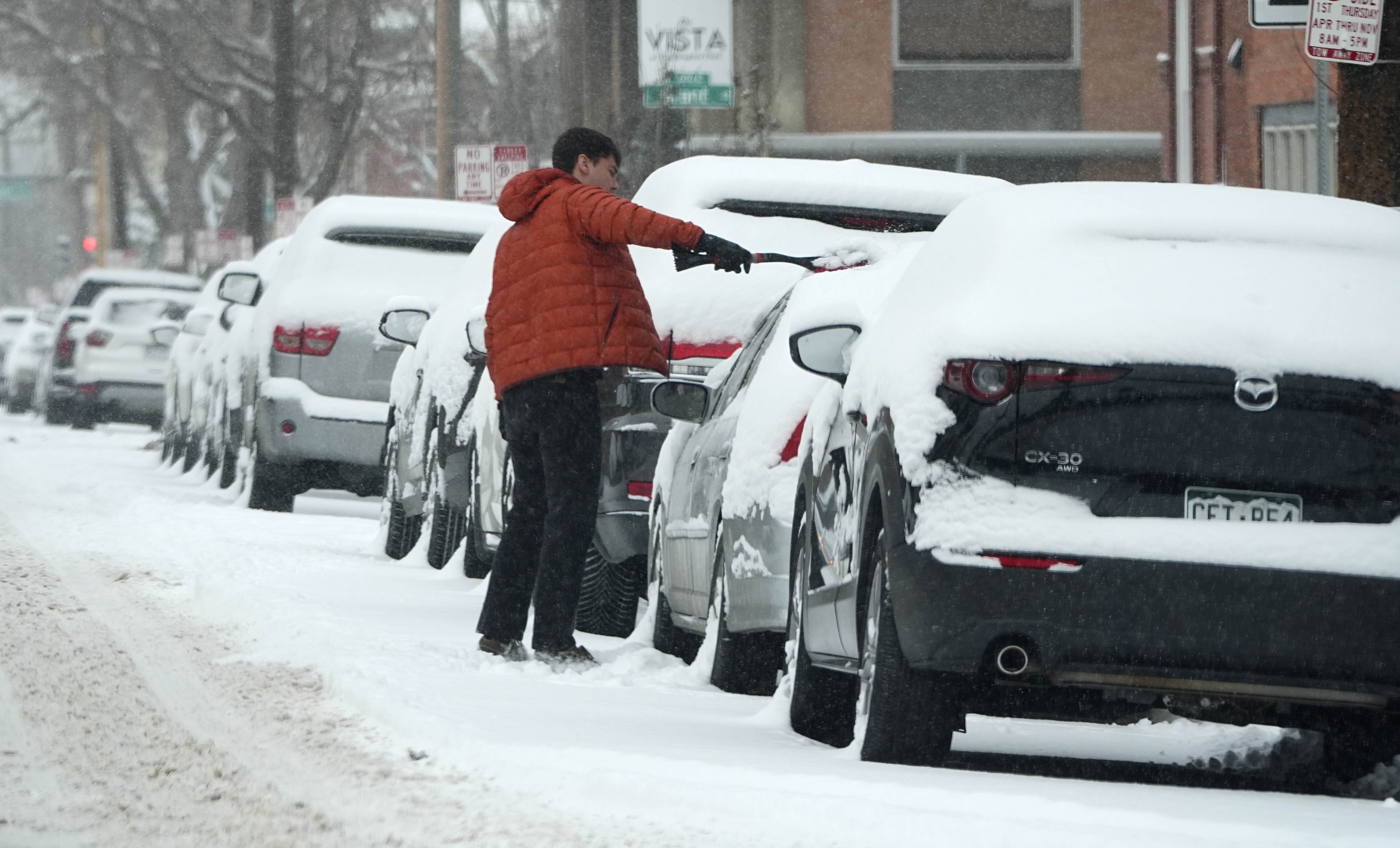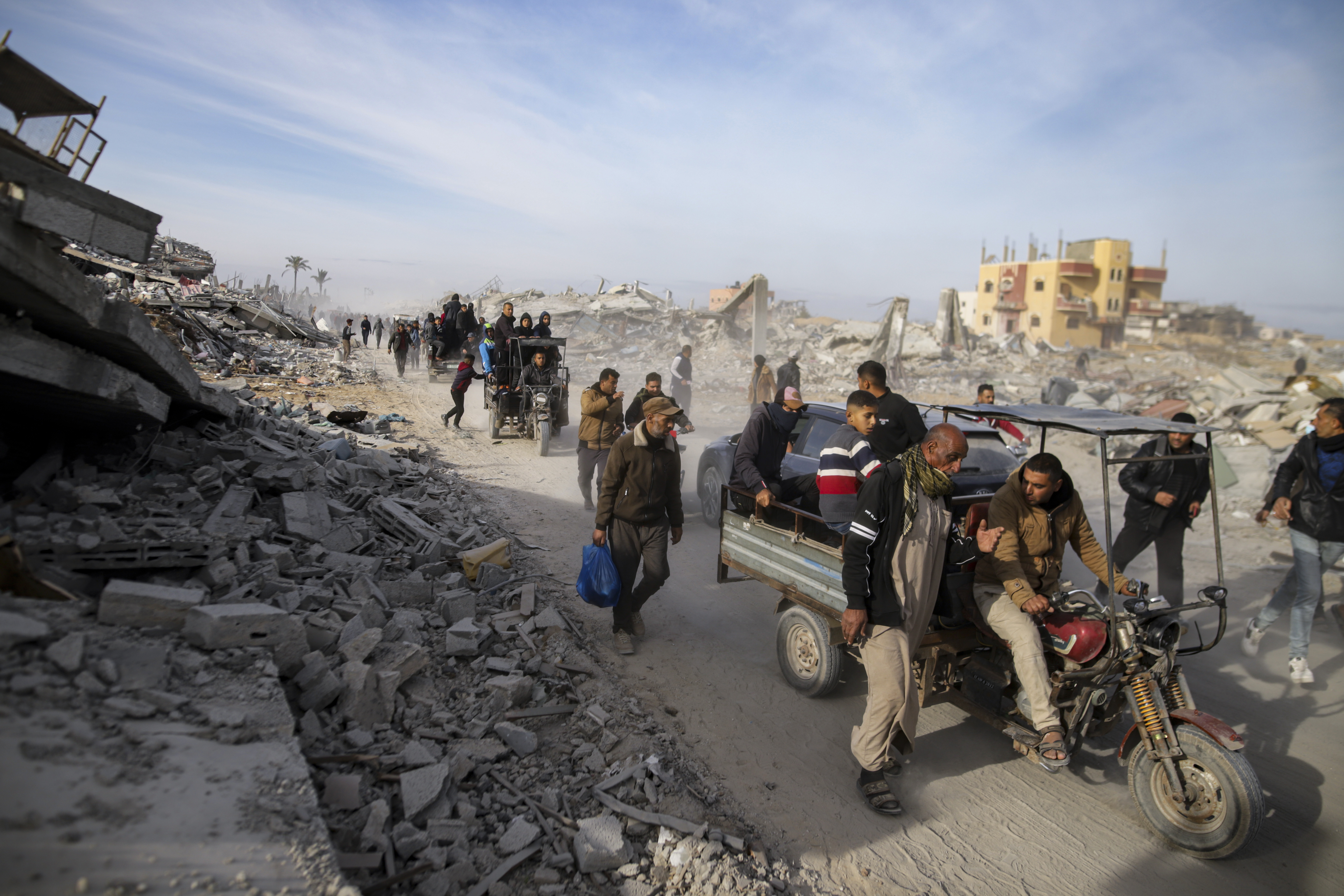
File. Two children play at a splash pad downtown San Diego, Sept. 1, 2022.
The U.S. is on track to shatter heat records, putting millions of Americans in the most affected parts of the country in harm's way for long-term, life-threatening health problems.
Most states in the South and Southeast, including Florida, Georgia, Kentucky, Mississippi, Oklahoma, Texas, Virginia and the Carolinas, are facing heat warnings on this Labor Day, according to the National Weather Service.
Extreme heat can be dangerous for anyone, of any age. For many people living in those areas, relentlessly high temperatures can be especially dire.
In states such as Alabama, Georgia, Louisiana, Mississippi, Georgia and South Carolina, the rates of chronic diseases such as diabetes, heart disease and kidney disease are among the highest in the U.S.
Get top local stories in Philly delivered to you every morning. Sign up for NBC Philadelphia's News Headlines newsletter.
Those diseases make it harder for bodies to cool themselves effectively during heat waves.
“People who have chronic health conditions are going to be more susceptible, particularly when you get sustained high-heat, high-humidity days,” said Dr. John Sherner, chair of medicine at MedStar Washington Hospital Center. “Their body is not going to be able to regulate temperature as tightly, so when the environment gets hotter, they’re going to get hotter more quickly.”
While no part of the U.S. is spared when it comes to rising heat or prevalence of underlying illnesses, the two often merge dangerously in the South and Southeast.
U.S. & World
Stories that affect your life across the U.S. and around the world.
Monday’s heat risk forecast
“Major” and “extreme” heat risk levels pose a danger to people without effective cooling or hydration.

Under those conditions, the body’s natural impulse is to dilate, or widen, the blood vessels so that more blood gets to the skin to expel as much internal heat as possible. The heart has to work hard to make this happen.
It’s those Southern states that, historically, have had higher numbers of residents whose underlying health problems make it more difficult to do the work necessary to maintain a healthy body temperature.
Heart failure, for example, is a condition in which the heart isn’t able to pump oxygen-rich blood at full strength to the entire body, even in normal temperatures.
Heart failure hospitalization rates from 2019 to 2021
Among those 65 and older, Medicare beneficiaries in the eastern U.S. had the highest rates of hospitalization related to heart failure.

Graphic: Jiachuan Wu / NBC News
According to 2019-21 data from the Centers for Disease Control and Prevention, older adults on Medicare living in Southern and Eastern states had the highest rates of hospitalization for heart failure in the country.
Strains on hospital systems
“We’re seeing a lot of heart failure,” said Dr. Joanne Skaggs, associate chief medical officer of adults at OU Health University of Oklahoma Medical Center, said, as well as “a significant amount of patients who are dehydrated and feeling dizzy” in emergency departments.
The combination is creating “a lot of strain on an already strained” health care system, she said.
Patients with diabetes or other chronic disease are at even greater risk for heart failure, according to the CDC.
“I had a couple that literally cooked themselves,” said Dr. David Obert, University Medical Center of Southern Nevada in Las Vegas. The pair, both older adults, stayed in their house for three days after their air conditioner broke, and developed significant kidney failure.
'A cycle we can't seem to break'
Heat waves are increasingly longer and more intense each year.
2023 was the hottest year ever recorded, according to the National Oceanic and Atmospheric Administration, and there is a 77% chance that 2024 will break that record.
“Unfortunately, this is a cycle that we can’t seem to break,” said Kimberly McMahon, public program manager at NOAA’s National Weather Service.
This summer, the National Integrated Heat Health Information System developed a federal strategic plan designed to explore critical issues surrounding heat’s impact on health. McMahon is a co-chair.
“If we know that heat is deadly — and we’re actually very good at forecasting how hot it’s going to be — why do we continue to have so many deaths?” she said.
Staying safe in the heat
- Drink water. When you think you’ve had enough, drink more.
- Recognize the signs of heat-related illnesses, including cramping, muscle spasms, dizziness, headaches, weakness, nausea and confusion. Those are signals that a person may need medical attention.
- Seek help if you do not have access to air conditioning or other ways of cooling down.
This article first appeared on NBCNews.com. Read more from NBC News here:



